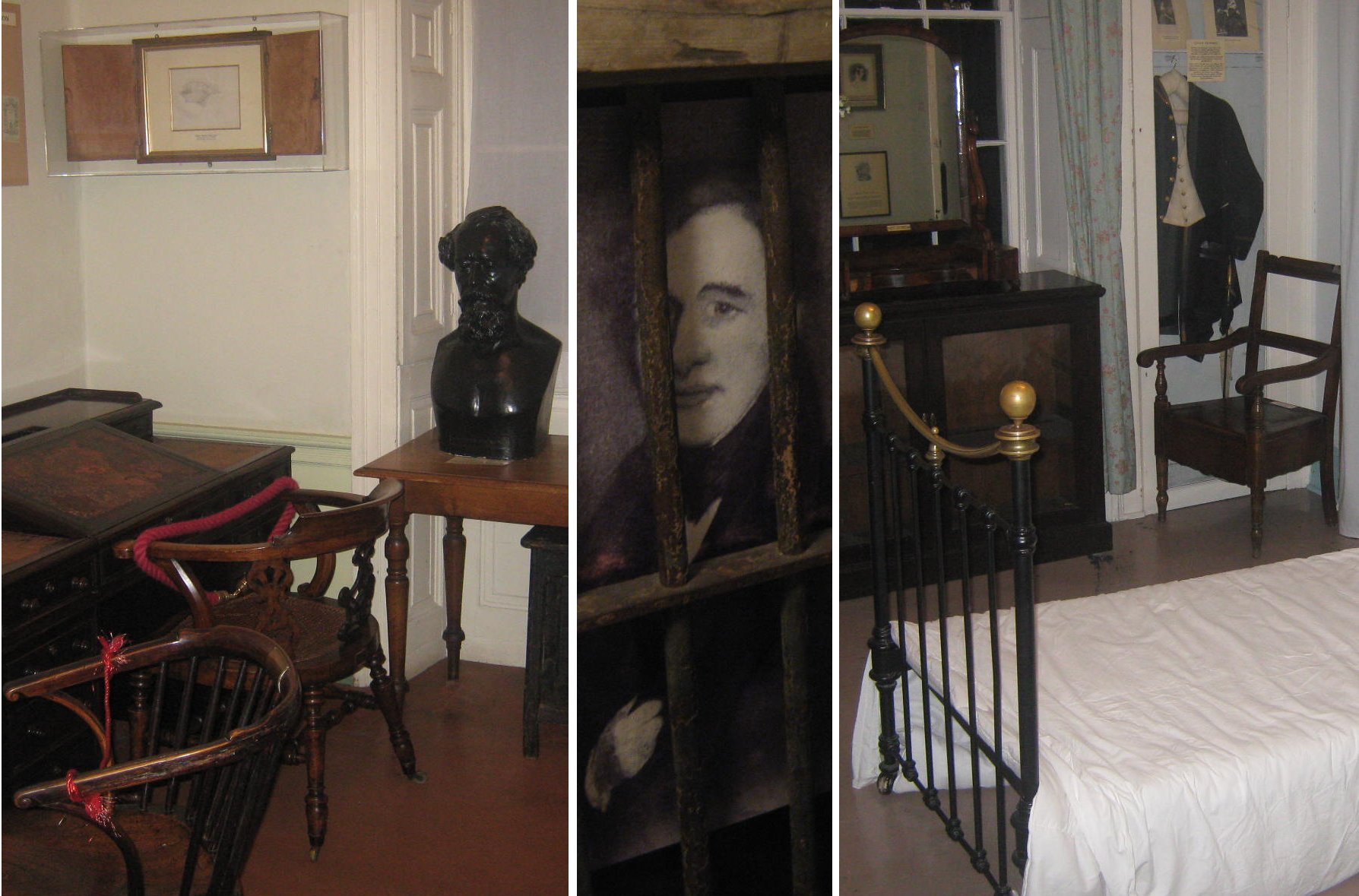
credit: Kathryn Faulkner
charles dickens residency

credit: Kathryn Faulkner
Residency at the Charles Dickens Museum, London
[CPD events - 2nd December 2010; 24th March 2011]
Writing on Location/ LinC project – NAWE/ MLA/ British Library
The aim: ‘To provide a creative writing element within the professional development activities and resources for teachers and museum professionals,
in turn providing a clear means of engaging school pupils with museum collections through creative writing.’
For Mario's Writing in Education (NAWE) article on the residency, 'Pigeons and Dickens', click here
‘It’s not what you look at that matters, it’s what you see’ Henry David Thoreau
Petrucci provocatively suggests a positive interpretation of cultural ‘junk’, preparing us for innovative exercises that utilise museum artefacts to maximum effect for writing and education. He uncovers the constraints residencies sometimes impose on creative activity, examining how these might shape the activity and also how they can be turned to advantage. Emphasising the skills a commissioned writer requires for deep work, Petrucci encourages open writing methodologies that centre on process, including intelligently productive responses to ‘difficulty’ that achieve lasting rewards.
For a pdf of the A4 CREATIVE WRITING ACTIVITY SHEET (schools, teachers, writers) - also adaptable to other museums - CLICK HERE
"Strengthen[s] the bridge between past and present, the emotional with the historic... doesn’t actually require any prior knowledge of Dickens"
“Much might be said about setting up writing activities to avoid prescriptively ‘joining the dots’. I was looking to involve visitors with the museum, returning them to their study of Dickens renewed and invigorated… The idea was to amplify Dickens, in an experiential way, via the resonator of his house.” “I generally favour the creation of open writing structures, where staff and students are guided into witnessing the writing process… Some of this, inevitably, will be off-script, relying on the facilitator’s interjections and nudges, those moments that crop up in any exercise where a contribution from a participant can be reflected back into the group as a process insight.” “We have to accept that however good our follow-up is, however imaginative and professional the concrete resources we leave behind, there’s just no substitute for an experienced and sensitive writer-facilitator working face to face with participants. The ‘hard copy’ is important for dissemination, yes; but it can never contain or codify all the instinct and magic of human educative interaction.” “I often ask for participants to share anything... that they might describe as ‘rubbish’… In fact, with a little imagination, what were thought ‘dud’ lines can become some of the most productive starting points for unusual new ideas.” “We do a disservice to students by always avoiding ‘stuckedness’ in favour of well-lubricated exercises that present no obstacle in class but leave them unable to get past any block unassisted. Instead, it’s helpful – and often empowering – for students to witness a problem being overcome in real time. Even when the entire ‘ideas flock’ of a class seems grounded, if one snagged notion can be helped to get visibly airborne, the rest often seem to follow.” “This activity encourages students (and, indeed, teachers) to pluck up the courage to set off for the unknown via a prompt, or priming image, that they haven’t yet fully grasped, rather than an easier destination already clearly mapped out for them. And if that doesn’t reflect one of the deepest, richest aspects of teaching practice – let alone of writing experience and process – I really don’t know what does.”
“It didn’t appear daunting and would encourage those less willing to ‘write’ and ‘share’.” “Could certainly be used to bring Dickens’ world/ possessions to life.” “Widened understanding of Dickens as a person... and not someone to be in awe of.” “This is writing poetry by ‘stealth’!” “I went home buzzing.”
“Help[s] strengthen the bridge between past and present, the emotional with the historic... the beauty of the resource is that it doesn’t actually require any prior knowledge of Dickens – just a willingness to engage imaginatively with the Museum and its collection.” “Great delight from participants as to the ease with which a unique response could be created – especially useful for the reluctant learner who lacks confidence.” “Mario is supportive, generous, calm and agreeable, happy to be part of a team.” “Mario is obviously at ease with young participants and students... Clearly he has much to share in enthusiasm, originality and experience – and he’s able to communicate the real surprise that only poetry can create.”
|
Figures for article....  Figure 1 Figure 2 [by kind permission (Charles Dickens Museum)]
Figure 4 Figure 5 credit: Kathryn Faulkner |
FURTHER INFORMATION
&
BOOKINGS
copyright mario petrucci 2010